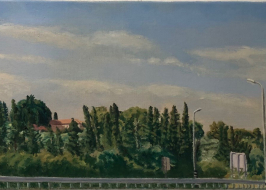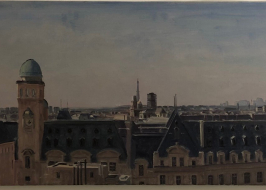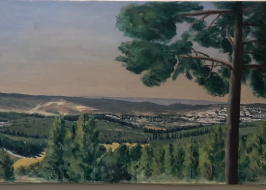Shalom Flash"Views"Raoul and Graziella de Picciotto Building for Scientific and Technical Support, 1st floor1
Shalom Flash focuses on landscape and urban landscape paintings, a movement that emerged in the 17th century in the Netherlands, and in the 18th and 19th centuries in other European countries.
There are two types of landscape paintings: Panoramic, which present a comprehensive and sweeping view of a certain area; and anecdotal, or unique, which show a specific point in space, such as a narrow passageway or an old house. Work on a panoramic painting may take several months. Flash: “The need for similar light conditions dictates a specific schedule, allowing no more than two hours of work on a painting per day.” An anecdotal painting, on the other hand, can be completed within a few hours.
Flash says he “scribbles” from a young age. When he was 24, he almost started studying physics, but art beckoned, and he gave up the “realistic” world to return to painting. “It wasn't a difficult decision,” he says, “Painting was simply more captivating than other things.” He later studied art at the Chelsea College of Arts in London, at HaMidrasha Art School (then in Ramat Hasharon), and at the Massachusetts College of Art and Design, where he was exposed to contemporary American landscape painting. Flash sees painting as a kind of language that enables people to develop a deep visual understanding of themselves and the world around them.
Curator: Yivsam Azgad













